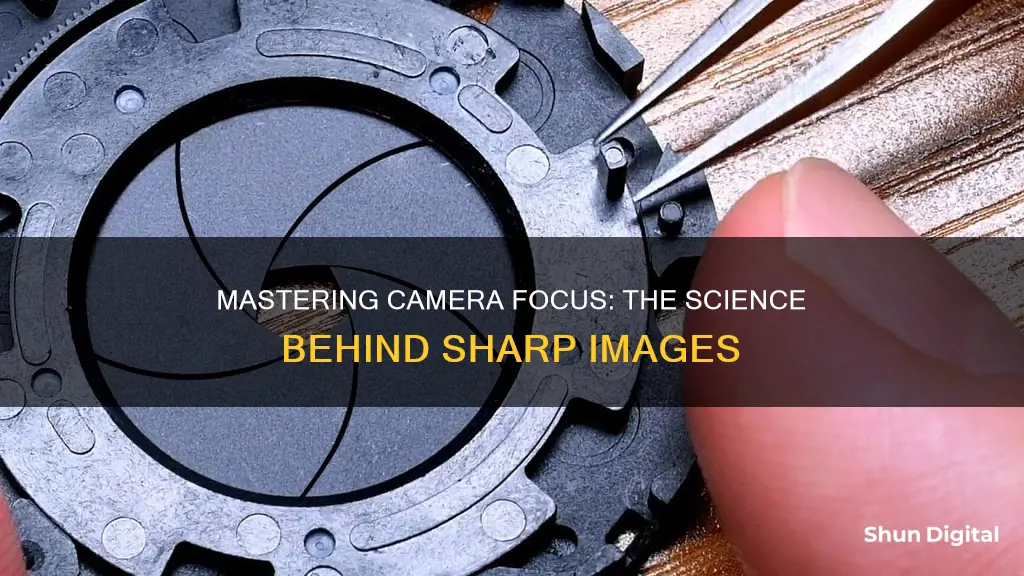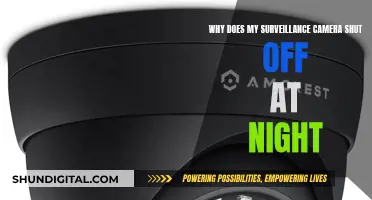
Focusing is an integral part of any camera operation. The basic technology that makes photography possible is fairly simple: a still film camera is made of three basic elements – an optical element (the lens), a chemical element (the film), and a mechanical element (the camera body itself).
The optical component of the camera is the lens. Its job is to take the beams of light bouncing off an object and redirect them so they come together to form a real image. The process is simple: as light travels from one medium to another, it changes speed. A lens slows down light as it enters at an angle, bending it. This effectively reverses the path of light from an object.
Cameras use autofocus systems to focus on a subject. An autofocus (AF) optical system uses a sensor, a control system, and a motor to focus on a manually or automatically selected point or area. Autofocus systems rely on one or more sensors to determine the correct focus. Autofocus is the mode on a camera that instructs the lens to focus on a subject. First, the camera has to collate enough information to be able to create a sharp image. This saves time compared to manual focusing and ensures sharper images.
Autofocus accuracy within 1/3 of the depth of field at the widest aperture of the lens is common in professional AF SLR cameras. Most multi-sensor AF cameras allow manual selection of the active sensor, and many offer automatic selection using algorithms. The data collected from AF sensors is used to control an electromechanical system that adjusts the focus of the optical system.
| Characteristics | Values |
|---|---|
| Camera Focusing Modes | Autofocus, Manual Focus |
| Autofocus Type | Phase Detection, Contrast Detection, Hybrid |
| Autofocus Methods | Active, Passive, Hybrid |
| Autofocus Assist | Flash, Autofocus Assist Beam (Visible or Infrared Light) |
| Focus Modes | Single-Shot, Continuous, Predictive |
| Focus Points | Single, Multi-Area, Auto, Manual |
What You'll Learn

Autofocus
The autofocus system in a camera uses a sensor, a control system, and a motor to focus on an automatically or manually selected point or area. The AF sensor determines if the scene appears in focus. If it's not in focus, it tells the AF motor to move the lens element(s) in the direction it thinks will bring the scene into focus. The AF sensor then tells the lens to stop focusing when the object becomes focused.
There are two main types of AF: passive and active. Passive AF can be performed using either the contrast detection or phase detection methods, but both rely on contrast for achieving accurate autofocus. The process of autofocusing generally works as follows:
- An autofocus processor (AFP) makes a small change in the focusing distance.
- AFP reads the AF sensor to assess whether and by how much focus has improved.
- Using the information from step 2, the AFP sets the lens to a new focusing distance.
- The AFP may iteratively repeat steps 2 and 3 until satisfactory focus has been achieved.
This entire process is usually completed within a fraction of a second.
Passive AF systems determine the correct focus by performing passive analysis of the image that is entering the optical system. They do not direct any energy, such as ultrasonic sound or infrared light waves, toward the subject. An exception to passive AF is when there is not enough light to take passive measurements, in which case an AF assist beam of infrared light is required.
Active AF systems, on the other hand, measure distance to the subject independently of the optical system and subsequently adjust the optical system for the correct focus. There are various ways to measure distance, including ultrasonic sound waves and infrared light.
A hybrid autofocus system combines two or more methods, such as active and passive methods or phase detection and contrast measurement.
Most multi-sensor AF cameras allow manual selection of the active sensor, and many offer automatic selection of the sensor using algorithms that attempt to discern the location of the subject. Some AF cameras are able to detect whether the subject is moving toward or away from the camera, including speed and acceleration, and keep focus—a function used mainly in sports and other action photography.
Single autofocus (AF) or single shot autofocus is a camera focus option that sets the camera to focus when the shutter release is depressed halfway and to keep the lens focused on the selected subject until the shot is taken and the button is released. Single focus mode is useful for static subjects such as still life and landscapes.
Continuous autofocus, on the other hand, is a camera focus option that keeps the camera focusing the lens as long as the shutter release button is half-pressed or the AF button is pressed. This makes it a very good option when photographing moving subjects because the camera will continuously adjust the focus distance as the subject moves around the frame.
Other autofocus options include automatic focus point selection, manual AF point selection, face detection AF, focus and recompose technique, and back-button focusing.
Bosch Cameras: Where Are They Manufactured?
You may want to see also

Manual focus
How to Manually Focus
First, locate the focusing mode switch on your camera or lens. It will likely be labelled with "AF/MF", where "AF" activates autofocus and "MF" activates manual focus. Then switch your setup to "MF".
Second, find the focus ring, which is often near the middle of the lens barrel (if you're using a prime lens) or near the end of the lens barrel (if you're using a zoom lens). Look through your camera viewfinder, then twist the focus ring to one side. You should immediately see the focus shift as different areas of the scene go in and out of focus.
When to Use Manual Focus
When Not to Use Manual Focus
If you're dealing with moving subjects or fast-paced scenarios, focusing manually may be completely fruitless. Therefore, in genres such as sports photography, wildlife photography, bird photography, event photography, and car photography, autofocus is generally your friend.
Police Arrest in Caught-on-Camera Heist
You may want to see also

Single-area AF
This autofocus technique works great for portraits of adults or teens, still lifes, or product photography work. If your subject is on the go, you'll want to use continuous AF.
If you mount an external speedlight that has an "AF-Assist" red beam, you will need to be in Single-area AF mode for it to work. The same is true for the AF-Assist lamp in front of your camera; it will only function in Single-area AF mode.
Trail Cameras: Plastic Materials and Their Uses
You may want to see also

Multi-area AF
When using Multi-area AF, the camera will attempt to find focus in multiple areas of the frame, rather than just a single point. This can be helpful when you want to ensure that multiple elements in the scene are in focus, such as when shooting architecture or landscapes. However, it is important to note that you will need to move the camera or use the multi-controller "joystick" to move the group of AF points if your subject moves outside of the initial frame.
It is worth noting that different camera brands may have slightly different implementations of Multi-area AF, so it is always a good idea to refer to your camera's manual to fully understand how it works on your specific model.
Selecting Camera Landscapes: Camera Raw Tips
You may want to see also

Phase detection
The two images are then analysed for similar light intensity patterns. If the images line up, the subject is in focus. If not, the camera can determine whether the lens needs to focus in front of or behind the point, and by how much. This is because when an object is out of focus, the light rays from the extreme sides of the lens will hit different sides of the sensor, instead of converging in the centre. The camera can then instruct the lens to make the necessary adjustments.
Car Mode: How Your Camera Adapts for Clearer Photos
You may want to see also







